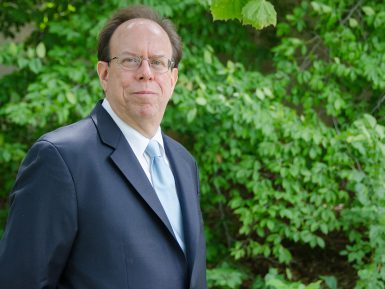Fargo discusses implications of First Amendment

First Amendment theory may have been established centuries ago, but debate over how it started and what the full extent of its implications are continues, according to associate professor Tony Fargo.
Fargo explained the conversation still surrounding the First Amendment Dec. 2 as part of the Media School’s weekly talk series.
“We’ve had scholars, judges, lawyers, other people—people like me, for that matter—try to fill in the blanks,” he said, “to explain what exactly it is about freedom of expression that’s so important that we had to enshrine it in an amendment to the Constitution and that we fiercely guard it through the judicial system and through our rhetoric.”
Fargo outlined key theories along the way in understanding the First Amendment, including Alexander Meiklejohn’s self-governance theory, Vincent Blasi’s checking value theory, and Thomas Emerson’s ideas about facilitating change through a stable manner.
“This is my favorite in many ways, because I think he’s actually onto something,” Fargo said of Emerson’s thoughts. Emerson argued that free speech allows the public to develop better as individuals.
Despite this number of logical although different theories surrounding how and why the First Amendment came to be, Fargo argued that each theory has some kind of flaw.
“All these theories probably have their flaws, and various scholars have pointed these out over the years,” he said.
More questions are raised with each explanation: Is truth in speech even attainable? Was Meiklejohn’s theory too narrow? Does change with stability actually work? Does the First Amendment matter when there isn’t some kind of crisis?
Today, Fargo said, courts may favor one theory over another in justifying a decision or making an argument, often featuring arguments based on the marketplace of ideas and self-governance theories.
These complications continue when looking at freedom of speech and First Amendment theory on an international platform. Not all countries have comparable amendments, but as society globalizes and the use of the Internet grows, people from different countries interact and these issues come into play.
Even though some conventions and unions have wide-ranging rights to freedom of expression established, these rules aren’t necessarily consistent.
“All of those recognize the right to free expression, but most of them have exceptions,” he said.
Questions about the First Amendment in a new, globalized age also stem from issues surrounding social media. Professor of practice Elaine Monaghan brought up the issues of hate speech and social media. Social media, she argued, gives a new and hard to control platform for those espousing hate speech.
“The place where I see potential, certainly within the media industry where I come from, for a new analysis of that, is in hate speech communicated via social media. The place where it comes from is the point,” she said. “When journalists repeat someone else saying hate speech, that’s a very different kind of hate speech from some racist woman on Facebook saying things.”
Fargo agreed with this point.
“Social media is, in many ways, dominating Internet traffic,” he said. “It’s a very fertile area for re-examining all this.”
Fargo said focus seems to be centered on social media and the way people form their own news channels and networks. Questions will presumably continue to build and change as society grows more and more connected in speech and communication, and social media is a natural place to focus the debate.
“That seems to be kind of where the action is right now,” he said.

